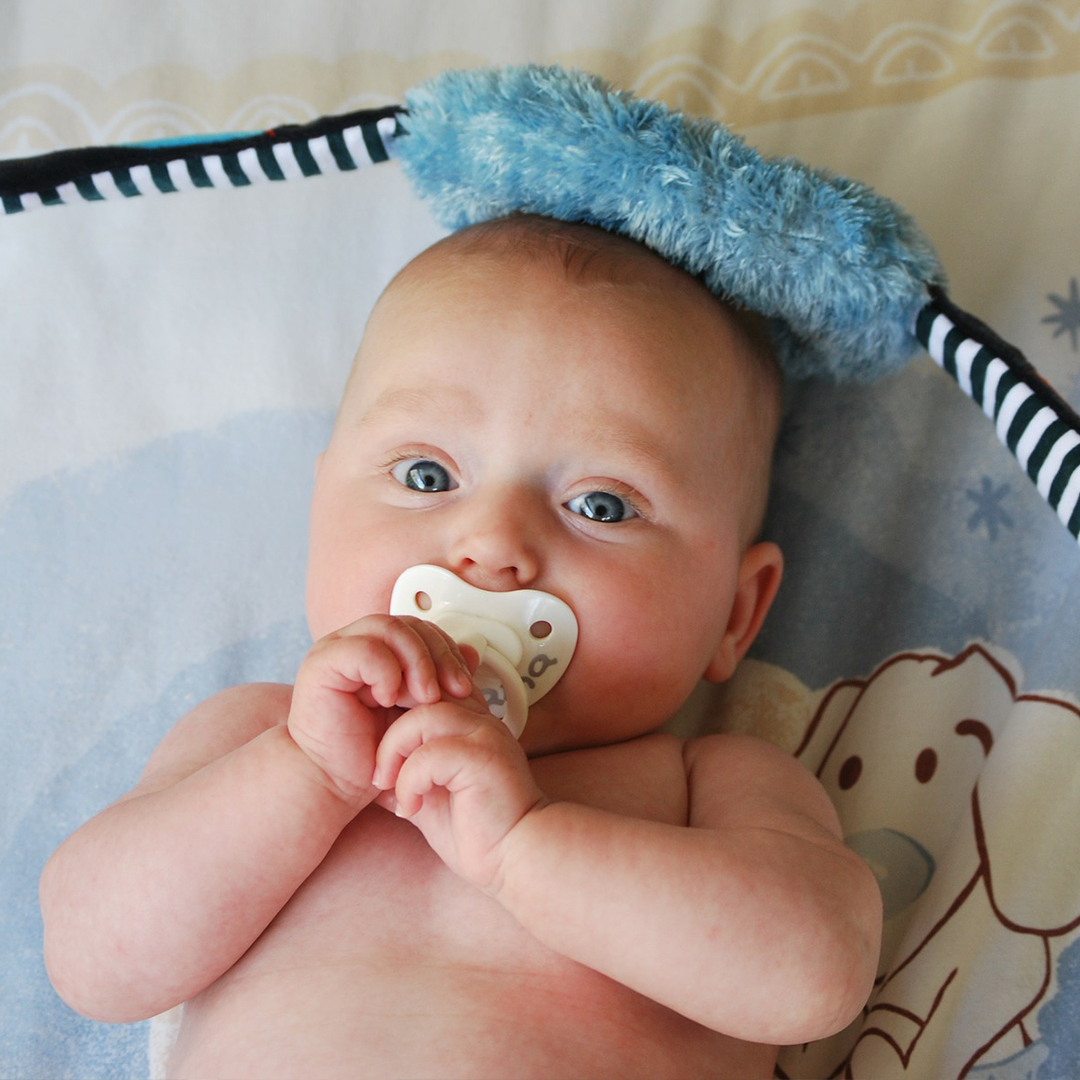Sleep Coaching and Pacifiers: Sleep Coaching With and Without Them
Hi. I’m Kim West, The Sleep Lady, and today I’m going to answer Kate’s question about sleep coaching and pacifiers:
“My seven-month-old goes down fine at about 7 o’clock and has been sleeping through until about 11 p.m. or 1 a.m. Then I give him a bottle and put him back down. If I’m lucky he goes down for an hour before waking up. From that time on, he doesn’t really settle and I’m up and down putting his dummy (pacifier) in and trying to settle him. I get so tired by this point that I end up putting him in our bed. I know your advice will probably be don’t put him in our bed, but is there anything else you can suggest, please? Thanks, Kate.”
Before Sleep Coaching
There is a helpful article on my blog that discusses the ten steps to take before starting sleep coaching. This article will help you set yourself up for success to start sleep coaching.
Decide what you’re going to do about the pacifier (dummy). In other words, you will need to decide if you are you going to keep it or not.
Wondering what you can do before sleep coaching?
Read: Newborn Sleep Schedule: What You Can Do for Some Sleep
Pincer Grasp
The problem with sleep coaching and pacifiers at seven months is often the lack of a “pincer grasp.” The “pincer grasp” is the ability to press the forefinger and thumb together to pinch something, and put it in one’s mouth.
At seven months a baby is usually only doing a sweeping motion. Often it’s luck if they get the pacifier in their mouth. Most babies this age lack the fine motor skills needed to pinch the object and place it in the mouth.
If your child does have the skill and you want to keep the pacifier, start putting several pacifiers in the crib. At bedtime you can put one in each hand and see if he can put a pacifier in his mouth himself. Try this each time he wakes up during the night.
Eventually you will place the pacifier(s) near him. If he’s really good at rolling, then you can point to the pacifier and direct him to it so that he can grasp it on his own. If he whines for you to get it, you can put it in his hand and let him put it in his own mouth. Eventually, you will direct him to get it all by himself.
 No Pincer Grasp?
No Pincer Grasp?
If he doesn’t have the pincer grasp, you may have to consider getting rid of the pacifier. Unfortunately there is no way to gently wean the pacifier as it’s either in your mouth or it’s not.
Be prepared for a few nights of crying if you choose to wean the pacifier.
Start with nights and keep it for naps. It’s surprising that this works , but it does. If you’re constantly going in and re-plugging it for naps, then that will be your cue to get rid of it for naps, too.
If you decide to keep the pacifier and he doesn’t have the pincer grasp, then you will be in charge of re-plugging it until he either has the pincer grasp or you decide to wean it.
Need more pacifier information?
Read: Baby Sleep Help: To Wean or Not to Wean the Pacifier
Create a Feeding Plan
At this point I would encourage you to create a feeding plan. You want to make sure that he’s eating well enough during the day and that you feel comfortable with him having just one feeding during the night or no feedings. The number of night feedings will be determined by what you and your doctor feel is right in terms of his weight, his growth, and his age.
Need help with night weaning?
Read: Night Weaning After Six Months: How to Gently End Night Feedings
Well-Napped is Key
I want you to start sleep coaching on a night when he is well-napped. That means do whatever works to get the amount of napping time needed in during the day. If it is necessary to rock him to sleep, to feed him to sleep, or to use a stroller, do it. Then you can get to that seven o’clock bedtime awake without him going to sleep or getting too drowsy with his bottle.
In order for a baby to learn how to sleep through the night, it is essential for him to be put in the crib at bedtime while drowsy but awake. He should not be so tired that he immediately nods off to sleep. I define drowsy but awake as “I’m dry, I’m fed, I’m warm, I’m clean, I’m loved, and now it’s time for me to go to into my bed.”
Need to know more about Drowsy But Awake?
Read: Drowsy But Awake — The Cornerstone of Successful Sleep Training
Consistency is Critical
Regardless of whether you’re keeping the feeding during the night or not, you’re still going to want to create a consistent sleep coaching plan for all of the other waking. Following these steps should help you get your baby and you sleeping through the night.
Have no idea where to begin solving your child’s sleep issues?
Start with this guide.


